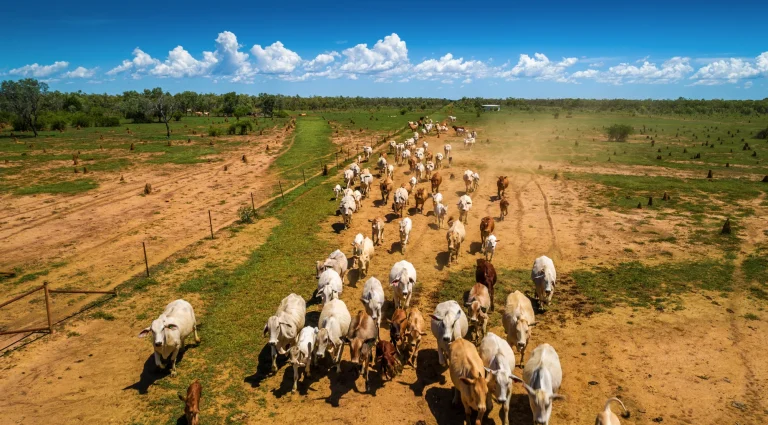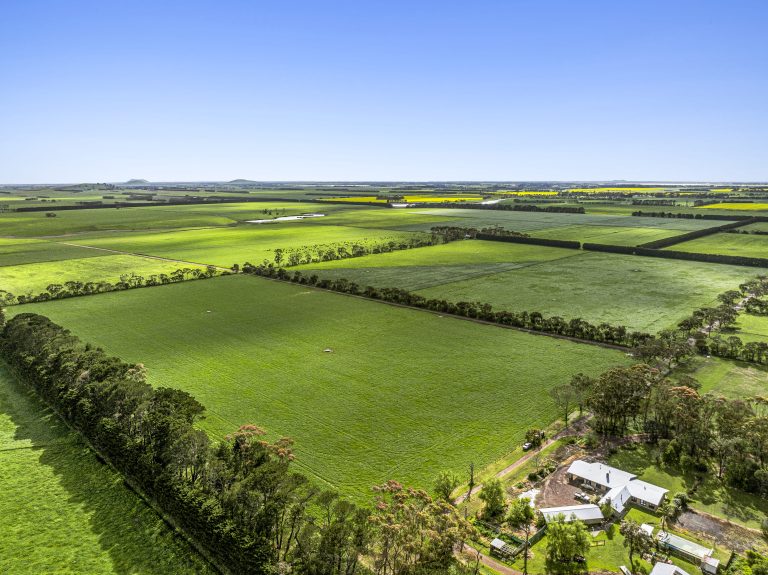Guidelines for Investing in Australia’s Crop Farming Industry: Strategic Investment Framework
Introduction
What makes Australia one of the world’s most attractive destinations for crop farming investment, and how can investors position themselves for success in this dynamic agricultural sector? The answer lies in understanding comprehensive guidelines for investing in Australia’s crop farming industry, which encompasses diverse regional opportunities, established infrastructure advantages, and strong export market positioning that create compelling investment propositions.
Australia’s crop farming sector offers unique investment advantages through its vast productive agricultural regions, advanced farming systems, and strategic proximity to growing Asian markets that demand high-quality agricultural commodities. The combination of reliable rainfall zones, fertile soils, and sophisticated agricultural infrastructure creates investment opportunities across multiple crop types and production systems.
At Agribusiness Horizons, we specialize in guiding investors through Australia’s complex crop farming investment landscape, providing comprehensive market analysis, property assessment, and strategic advisory services that support successful agricultural investment decisions. Our expertise ensures investors access the best opportunities while managing risks associated with agricultural investment ventures.
This strategic analysis will examine essential investment considerations for Australia’s crop farming sector, from regional opportunity assessment and market analysis to operational evaluation and risk management strategies. You’ll gain insights into professional investment frameworks, due diligence processes, and strategic positioning approaches that successful agricultural investors employ across Australia’s diverse crop production regions.
Australia’s Crop Farming Investment Environment
Australia’s agricultural sector represents one of the world’s most efficient and technologically advanced farming systems, supported by favorable climatic conditions, established export infrastructure, and strong institutional frameworks that provide investment security and operational reliability. This foundation creates attractive investment opportunities for both domestic and international agricultural capital.
The country’s diverse agricultural regions support multiple cropping systems, from wheat and barley production in temperate zones to cotton and sorghum cultivation in subtropical areas, providing investors with portfolio diversification opportunities and risk management benefits through geographic and commodity spread.
Government policy frameworks support agricultural investment through clear land tenure systems, established water allocation processes, and foreign investment guidelines that provide certainty while encouraging capital deployment in productive agricultural enterprises. These regulatory foundations create stable investment environments that appeal to institutional and private investors.
Export market access advantages position Australian crop producers favorably for international market participation, particularly in Asian markets where demand for high-quality agricultural commodities continues expanding. This export orientation provides Australian crop farming investments with currency diversification and market premium opportunities.
Australia’s research and development capabilities in agricultural science, crop breeding, and farming technology provide ongoing innovation that supports productivity improvements and competitive positioning for crop farming investments. This innovation environment creates long-term value enhancement opportunities for agricultural property investors.
Strategic Framework Following Guidelines for Investing in Australia’s Crop Farming Industry
Regional Investment Analysis and Opportunity Assessment
Successful Australian crop investment strategies require comprehensive regional analysis that examines climatic advantages, soil quality, infrastructure access, and market positioning factors across different agricultural zones. Each region offers distinct investment characteristics that appeal to different investor profiles and return objectives.
The Murray-Darling Basin provides exceptional opportunities for irrigated crop production, supporting high-value crops including rice, cotton, and specialty grains that benefit from water security and premium market positioning. This region attracts investors seeking stable returns through established irrigation systems and diversified cropping capabilities.
Western Australia’s wheat belt offers large-scale grain production opportunities with substantial land holdings that provide economies of scale and mechanization advantages. These investments appeal to institutional investors seeking exposure to commodity markets through efficient grain production systems.
Queensland’s agricultural regions support diverse cropping opportunities including cotton, sorghum, and specialty crops that benefit from subtropical growing conditions and established processing infrastructure. These regions provide investment opportunities for both broad-acre and intensive agricultural systems.
New South Wales and Victoria offer premium agricultural investment opportunities through their combination of fertile soils, reliable rainfall, and proximity to major population centers and export facilities. These regions typically command premium valuations but provide stable investment returns through established agricultural systems.
Crop Type Analysis and Investment Positioning
Grain farming investment principles encompass detailed analysis of different crop types, market dynamics, and production systems that influence investment returns and risk profiles. Understanding crop-specific factors enables informed investment positioning and portfolio construction strategies.
Wheat production represents Australia’s largest crop sector, providing investment opportunities through established market systems, efficient production methods, and strong export demand. Wheat investments typically offer stable returns with lower volatility compared to specialty crop alternatives.
Cotton farming provides higher return potential through premium commodity pricing and value-added processing opportunities, but requires specialized infrastructure and irrigation access that influences investment requirements and operational complexity.
Barley and canola production offer diversification benefits within grain farming portfolios, providing different harvest timing and market exposure that supports risk management and operational flexibility for agricultural investment strategies.
Pulse crops including chickpeas and lentils provide premium pricing opportunities and nitrogen fixation benefits that enhance soil health and rotation flexibility. These crops appeal to investors seeking sustainable farming systems and premium market exposure.
Specialty crops and emerging agricultural commodities offer higher return potential but require specialized knowledge and market development that influences investment risk and return profiles. These opportunities suit experienced agricultural investors with operational expertise.
Financial Analysis and Investment Structuring
Agricultural crop sector investment advice emphasizes comprehensive financial analysis that examines operational profitability, capital requirements, and return projections across different investment scenarios and market conditions. Professional financial modeling provides the foundation for informed investment decisions and risk assessment.
Cash flow analysis considers seasonal production cycles, commodity price variations, and operational cost structures that influence investment returns and financing requirements. Understanding cash flow patterns enables appropriate investment structuring and financing arrangement development.
Capital requirement assessment examines land acquisition costs, infrastructure development needs, and operational working capital that influence total investment requirements and return calculations. Accurate capital planning supports realistic investment expectations and appropriate financing structures.
Return on investment calculations consider both capital appreciation potential and operational income generation through crop production activities. Professional analysis incorporates multiple scenarios including optimistic, base case, and conservative projections that reflect market uncertainties.
Risk assessment methodologies examine weather risks, commodity price volatility, operational challenges, and market access factors that influence investment outcomes. Comprehensive risk analysis supports appropriate investment structuring and mitigation strategy development.
Australian Crop Farming Investment Comparison
| Investment Approach | Risk Profile | Return Characteristics | Capital Requirements |
|---|---|---|---|
| Large-Scale Grain | Moderate commodity exposure | Stable long-term returns | High initial investment |
| Irrigated Cropping | Weather risk mitigation | Premium income potential | Significant infrastructure costs |
| Dryland Farming | Higher weather dependency | Variable seasonal returns | Lower establishment costs |
| Specialty Crops | Market development risk | High return potential | Intensive management needs |
| Mixed Farming Systems | Diversified risk exposure | Balanced return profile | Moderate capital flexibility |
| Contract Farming | Reduced market risk | Predictable income streams | Partnership arrangements |
This framework illustrates how crop production investment framework considerations vary across different investment approaches and operational strategies available to Australian agricultural investors.
Due Diligence and Property Assessment
Professional due diligence processes examine soil quality, climate suitability, infrastructure condition, and operational history that influence property values and investment potential. Comprehensive property assessment provides the foundation for informed investment decisions and realistic return projections.
Soil analysis considers fertility levels, organic matter content, drainage characteristics, and long-term productivity sustainability that influence crop production potential and operational success. Understanding soil capabilities enables accurate yield projections and investment planning.
Climate assessment examines rainfall patterns, temperature ranges, frost risks, and seasonal variations that influence crop selection and production reliability. Regional climate analysis supports crop choice decisions and risk management planning for agricultural investments.
Infrastructure evaluation considers irrigation systems, storage facilities, transportation access, and operational buildings that influence investment requirements and operational efficiency. Infrastructure assessment helps determine additional capital needs and operational capabilities.
Historical performance analysis examines yield records, financial results, and operational efficiency metrics that provide insights into property potential and management requirements. Performance history supports realistic investment projections and risk assessment.
Agribusiness Horizons’ Australian Crop Investment Advisory Services
Our comprehensive approach to crop farming investment combines deep agricultural expertise with sophisticated financial analysis, providing clients with strategic guidance that supports successful investment outcomes. We understand that guidelines for investing in Australia’s crop farming industry require specialized knowledge of regional markets, operational systems, and risk management strategies.
At Agribusiness Horizons, we provide detailed Australian agricultural property analysis that examines soil capabilities, climate advantages, infrastructure quality, and market positioning to identify premium investment opportunities. Our agricultural economists analyze commodity markets, regional trends, and investment factors that influence crop farming property values and returns.
Our investment advisory services include comprehensive due diligence that examines operational records, financial performance, soil testing results, and infrastructure condition assessments. We coordinate with agricultural specialists, soil scientists, and market analysts to provide thorough investment evaluations.
Through our extensive agricultural network, we identify off-market opportunities and facilitate connections between qualified investors and motivated sellers across Australia’s premier crop farming regions. Our relationship-based approach often provides clients access to exceptional properties before general market availability.
We provide ongoing market analysis and farming industry investment guidance Australia services that help clients understand market trends, commodity outlook, and optimal investment timing. Our market intelligence includes regional performance analysis, commodity price forecasting, and investment opportunity identification.
Our advisory services extend beyond property acquisition to include operational optimization recommendations, crop selection guidance, and strategic planning that maximizes investment returns and operational success across diverse Australian crop farming enterprises.
Current Market Trends and Investment Opportunities
Contemporary Australian crop farming investment increasingly emphasizes sustainable farming practices, precision agriculture technology, and environmental stewardship capabilities that appeal to modern investors and meet evolving market requirements. Understanding these trends becomes essential when following guidelines for investing in Australia’s crop farming industry in today’s market environment. Properties with established sustainability programs and technological sophistication often attract premium investment interest.
Water resource security and drought resilience have become primary considerations for Australian agricultural investment, as climate variability influences operational reliability and long-term investment sustainability. Properties with secure water access and efficient irrigation systems typically receive preferential investor attention.
Carbon farming potential and environmental service opportunities represent emerging value components that sophisticated investors increasingly consider when evaluating Australian crop farming properties. These environmental assets provide additional revenue streams and enhance investment portfolio diversification benefits.
Technology adoption and precision farming capabilities increasingly influence investment decisions, as investors seek properties equipped with modern systems that support operational efficiency and competitive positioning. Agricultural properties with advanced technology infrastructure demonstrate operational sophistication and future adaptability.
Export market development and trade relationship expansion continue creating opportunities for Australian crop commodities, supporting agricultural property values and investment returns. Understanding export market dynamics helps identify investment opportunities with superior growth potential.
Government support programs and agricultural development initiatives provide opportunities for investment enhancement through infrastructure development assistance and operational support programs. These programs can enhance investment returns and reduce operational risks.
Risk Management and Investment Protection Strategies
Successful crop farming investment requires comprehensive risk management that addresses weather variability, commodity price volatility, operational challenges, and market access factors that influence investment outcomes. Professional risk assessment provides frameworks for identifying and mitigating investment risks.
Weather risk management through diversification strategies, crop insurance programs, and drought management planning helps protect investment values and operational continuity. Understanding regional weather patterns and implementing appropriate protection measures supports stable investment returns.
Commodity price risk mitigation includes forward contracting, price hedging, and market diversification strategies that reduce exposure to price volatility and market uncertainties. Professional commodity risk management supports more predictable investment outcomes.
Operational risk assessment considers management quality, labor availability, and infrastructure reliability factors that influence investment success. Properties with established operational systems and proven management capabilities typically provide more stable investment outcomes.
Market access and transportation risk evaluation examines infrastructure reliability, export facility access, and supply chain efficiency that influence marketing costs and operational convenience. Understanding market access factors helps select investments with superior positioning.
Environmental and regulatory risk management includes compliance assessment, environmental stewardship planning, and regulatory change adaptation strategies that protect long-term investment values and operational sustainability.
Professional Investment Standards and Advisory Services
Professional agricultural investment advisory requires adherence to industry standards, fiduciary responsibilities, and comprehensive analysis methodologies that ensure client interests and investment success. Working with qualified agricultural investment specialists provides access to professional expertise and market intelligence.
Investment analysis standards include comprehensive financial modeling, market analysis, risk assessment, and operational evaluation that support informed decision-making. Professional investment analysis provides objective assessment and realistic return projections.
Due diligence procedures examine all aspects of potential investments including legal title, operational history, financial performance, and market positioning that influence investment viability. Thorough due diligence protects investor interests and reduces transaction risks.
Ongoing investment monitoring and performance analysis help optimize investment outcomes through operational improvements, market positioning adjustments, and strategic planning updates. Professional investment management supports long-term success and value enhancement.
Market intelligence and industry analysis provide investors with current information about market trends, commodity outlook, and investment opportunities that support strategic decision-making and portfolio optimization.
Conclusion
Successful participation in Australia’s crop farming investment sector requires comprehensive understanding of regional opportunities, market dynamics, operational requirements, and risk management strategies that collectively influence investment outcomes. These guidelines for investing in Australia’s crop farming industry provide systematic frameworks for evaluating opportunities and implementing successful investment strategies.
Professional agricultural investment expertise proves invaluable when navigating Australia’s complex crop farming investment landscape, as specialized knowledge of regional markets, agricultural systems, and commodity dynamics significantly influences investment success. Working with experienced agricultural investment advisors ensures access to market intelligence, professional analysis, and comprehensive advisory services.
Several strategic questions warrant consideration when evaluating Australian crop farming investments: How do regional climate patterns and soil capabilities align with your investment objectives and risk tolerance? What commodity market trends and export opportunities support long-term profitability in your target agricultural sectors? How do infrastructure requirements and operational complexity factors influence your investment preferences and management capabilities?
Contact Agribusiness Horizons today to discuss your Australian crop farming investment objectives and access our specialized expertise in agricultural property analysis and investment advisory services. Our team combines deep agricultural knowledge with comprehensive market analysis to help you identify and secure profitable crop farming investments that align with your strategic investment goals and risk management requirements across Australia’s diverse agricultural regions.



